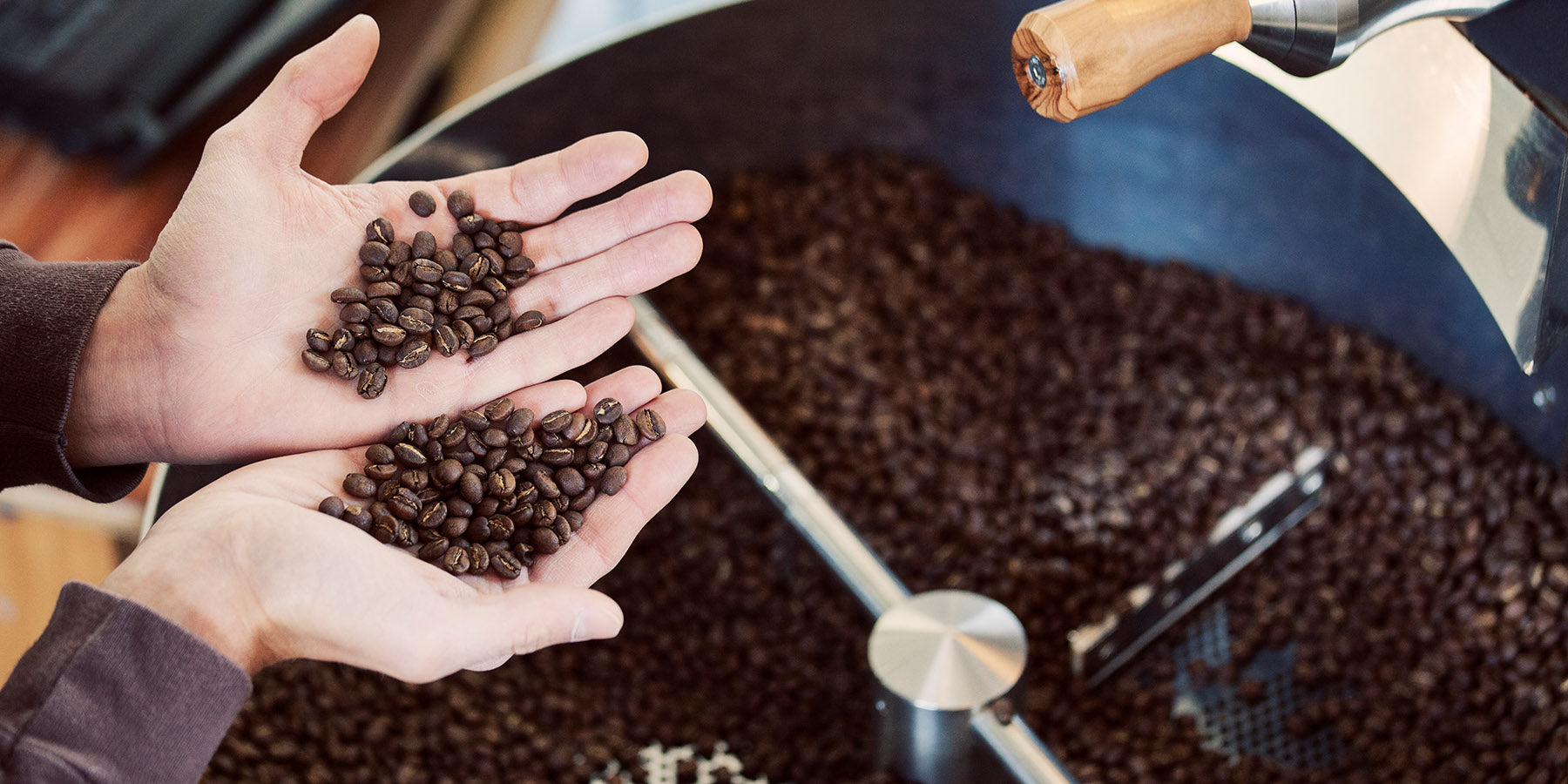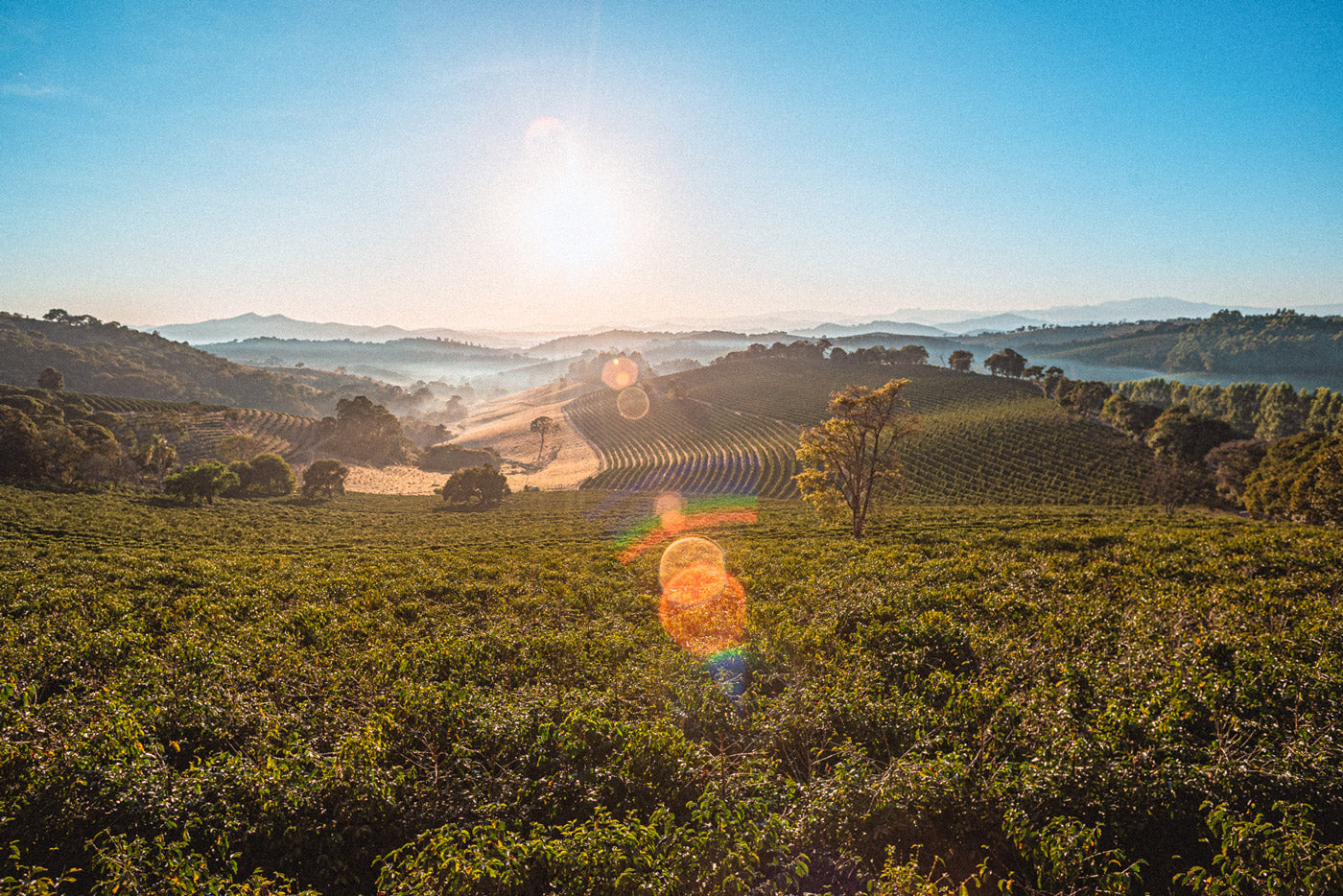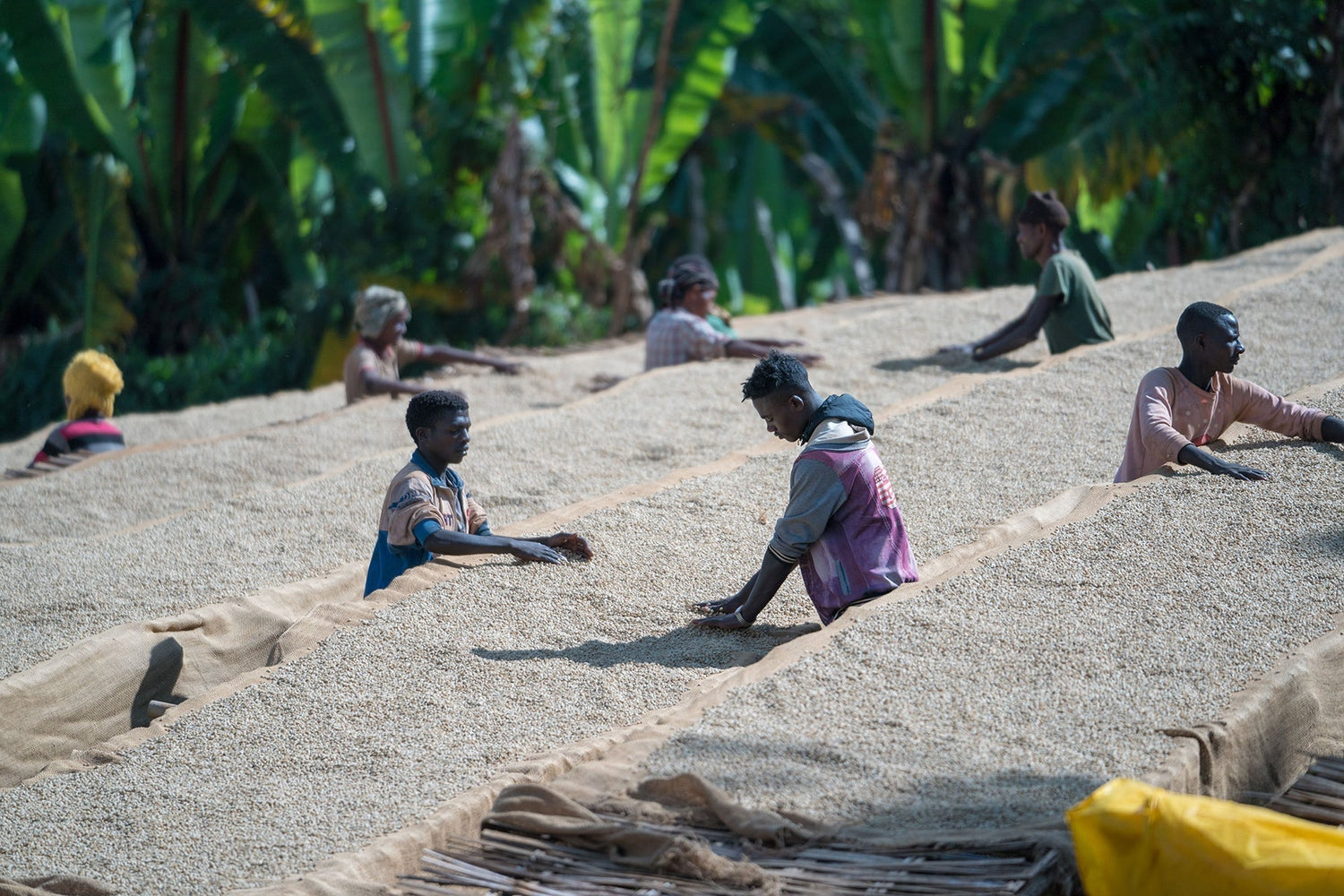It's all in the mix! This lovely saying applies to many things... including coffee. But we want to delve deeper into the area of coffee blending vs. single origin . And to do that, you should first know what that actually is. "Blend" comes from English and means mixture. So a coffee mixed from different types of beans and possibly from different countries . While a single origin means coffee from a single country and often from just a single region .

What is a blend?
A coffee blend is the combination of different types of coffee, such as Arabica and Robusta, which is what we do with our Wilderer, for example. However, you don't necessarily have to mix different types for a blend; you can also mix two or three or more Arabica coffees from different countries , such as our Wilde Milde , which contains beans from Brazil, Guatemala and Rwanda. The aim of a blend is, on the one hand , to create a specific and balanced cup profile and, on the other hand, to have a fairly consistent coffee.
Why do you do that?
The coffee bean is a natural product like grapes, potatoes or apples. And as a natural product, the harvest and the taste of the harvest are subject to environmental conditions such as rainfall, heat and soil conditions. So no two harvests taste the same. For example, if we were to make the Bergsonne Espresso from just one coffee bean from just one country or region, then the probability would be very high that it would taste different with each harvest . And you don't want that... you want the Bergsonne to taste the way the Bergsonne should taste. In every cup, in every month, always. And that's why coffee is blended. By mixing, you can better compensate for any taste differences between individual harvests.
Does blending occur often?
Even if you don't often think about it, most coffees on the market are blends. These blends - especially those from large roasters - often consist of 10 or even 20 different types of coffee, so that the coffee tastes the same every year and in every pack. There's nothing wrong with that. Blends from Wildkaffee, however, consist of a maximum of four types of coffee , mostly just three. There should be at least 20 percent of each type in a blend so that you can experience the flavor nuances of this bean.
When is mixing done?
There are two times for coffee blending: before or after roasting . At Wildkaffee, we mix our blends before roasting. This has the advantage that the beans react more uniformly during roasting, thus creating a very harmonious blend. In so-called post-roasting coffee blending, the varieties for the coffee blend are roasted individually and then mixed. The advantage here is that each type of coffee is roasted optimally and the best aroma is extracted from each variety. This approach offers more control over the roasting process, but can also require more time and effort.

Coffee Blending vs Single Origin
Blends therefore have many origins, although we know about each origin in our blends. Single origin coffees, on the other hand, as the name suggests, only have “one origin”. This means that with single origins the beans come from just one country or even region . These coffees are valued by connoisseurs for their ability to bring out the characteristic flavor nuances and conditions of the growing area. As with grapes , these coffees reflect the particular soil and climatic conditions of their place of origin , giving them a unique flavor profile. A single origin, for example, is our El Salvador Coffee School Project Espresso , which consists only of coffee beans from the Buenos Aires region.
One step smaller
So-called microlots or even nanolots go one step further than single origin. Only excellent coffee beans from the same farm or plantation are used for these coffees. Sometimes even only beans from a specific plot of a plantation. Here, many coffee farmers experiment with varieties, climate, soil, etc. Many of our specialty coffees come from such lots and impress with unusual flavor nuances. Another difference between blends and single original coffees is often the degree of roasting. Blends are usually medium to dark roasted and single origin coffee is rather light to emphasize the often fruity notes.


Taste and availability
Single origin coffees are ideal for coffee lovers who appreciate and want to explore the specific taste differences of different growing regions. These coffees are particularly suitable for manual brewing methods such as pour-over or French presses , as they emphasize their characteristic aromas. This includes our latest EL Salvador FES Orange 48N with flavors of orange and cashew. But also classics such as the Ruanda Umusazi Natural . But many single origin coffees are not always available. And there is no guarantee that next year's harvest will taste the same. Blends, on the other hand, ensure a consistent yet multifaceted taste that tastes (almost) the same every year and is also more readily available.
FAQ – Coffee Blending vs Single Origin
1 ) How are the beans roasted in a blend?
Blending takes place before or after roasting. For wild coffee, before roasting. We roast our blends dark for espressos and medium for coffees.
2 ) Why do we blend coffee at all?
Coffee blending produces a rounder taste with many nuances of the coffees used. In addition, a blend can remain more consistent in taste over the years and harvests.
3 ) Is a blend not as high quality as single origin coffee?
No, you can't say that. If the beans for a blend are high quality, then the blend is also high quality. As with wine, there are high quality cuvées and less high quality ones. The important thing with a blend is that it doesn't consist of too many different coffees. In our opinion, a maximum of five coffees.
4 ) Does the quality suffer during blending?
No. If it is good green coffee, the blend is also good. Of course, good green coffee can be roasted badly, but luckily our roasters are very experienced and roast our blends to perfection.
5 ) Single Origin – what do the countries taste like?
Ethiopian coffee often has floral and fruity notes of stone fruit or berries. Kenyan coffees are characterized by light, juicy and sweet aromas, while Indian coffee has nutty and spicy notes. South American coffee beans, such as those from Brazil or Colombia, tend to be more nutty and chocolatey.

Blend recommendation
That's difficult, because all of our blends are very tasty and recommendable. To keep things simple, we'll use one of our dark roasts, because we often have blends here. The Wildsau is our fruitiest espresso with floral flavors. The blend consists of three different country coffees: 50% Brazil, 25% Guatemala and 25% Ethiopia. This results in a full-bodied cup profile with distinct fruity aromas and tasty cocoa notes.

Single Origin Recommendation
Here, too, we can recommend all of our single origin coffees. We have medium roasts that are suitable for all preparation methods, such as the Ethiopia Guji with nuances of stone fruit and black tea. But all of our light roasts are also single origins, often even micro or nanolots. All of them are excellent, but of course you should choose the coffee that suits you best in terms of taste profile. The Brasil Arara Microlot , for example, has sweetness, tanginess and the taste of tropical fruits. The light coffees are best suited for pour-over preparation , as this is how the described taste nuances come out best.
Conclusion
Whether blend, single origin or nanolot - this description says nothing about the quality, only about the origin of the coffee or how many origins the coffee is made up of. There are excellent blends that impress with the many flavor nuances of the coffee used and the single origins are ideal for experiencing the typical taste of a country. And once again, it's up to you what you prefer ... find out, perhaps with our sample packages! We always present new single origins from us on social media. Drink more coffee and #staywild


